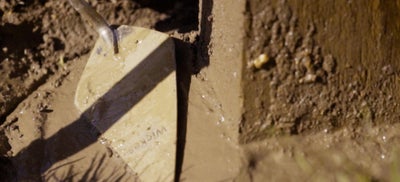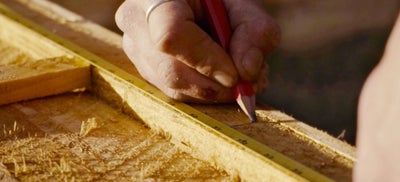How to install a fence
Putting up a garden fence
Garden fencing provides privacy, protection from the elements, and it can be used as a landscaping feature or as a support structure for plants. Wooden panel fencing is the most popular type used for property borders. It’s fairly easy to erect, and with correct maintenance it will last years.
This guide will explain how to build a new fence using Postcrete for setting the posts. We’ll also cover how to install fence panels, gravel boards, and trellis to your new fence.
Planning your new fence
Planning your fence properly is very important and will save time and trouble later on. It means you can be accurate with all the materials you need, saving on cutting and wastage. If your fence is marking a property boundary then we recommend that you talk to your neighbours first and let them know your plans.
- Does an existing fence need removing first? Whose property is it on, yours or your neighbours?
- Do you need access to their garden to install your fence?
- In most cases, you don’t need planning permission to erect a fence less than 2m high, but it’s best to check with your local planning authority if you’re unsure of restrictions.
- You may need planning permission if your fence will border a Public Right Of Way.
Although it’s possible to build a fence all year round, try to avoid very hot, cold, or wet weather conditions. Early spring or late autumn are ideal times as they cause the least disturbance to plant and soil health.
Use a CAT detector to scan for underground pipes and cables before you start. If you do find any cables, you will probably need to reconsider your plans.
Use pegs or bamboo canes and string to mark out where your fence line and posts will be. Most fence panels are sold as a standard 183cm wide, but other sizes are available. Use a batten that’s cut to the same length as your panels as a guide, and carefully mark out where the centre point of each post will be.
If you are using concrete or Postcrete to secure your posts then you will need a post hole 450-600mm in-depth, and a fence post up to 8ft high. Be sure to check the manufacturer’s instructions of concrete or Postcrete, and plan accordingly before you buy the timber.
Similarly, adding gravel boards or trellis will affect the height of your fence and the length of the fence post you need. Again, make sure you have measured and planned accurately before you buy your timber.
How to put up a fence
When putting up fencing, there are a few basic rules you should follow to ensure a stable and durable end result. Even though the fence posts are already treated, it’s a good idea to soak the base of the posts into wood preservative before installation.
Always use treated wood and exterior grade screws to prevent premature rotting and rusting. Even if you are installing a pressure-treated fence panel it should be raised a minimum of 50mm above the ground to help prevent rotting.
If you are installing a fence onto a sloping area, keep the fence panels along a horizontal line but fill the angled gap at the base by cutting a gravel board to size. Some heavily sloped areas will require a different method of installation, so seek specialist advice on how to build your fence in those instances.
Although it’s possible to erect a fence on your own it’s always safest to get somebody to help you.
When using Postcrete wear a dust mask, safety goggles and protective gloves, and be sure to follow the manufacturer’s instructions. Wear protective gloves when handling wood and applying wood preserver. Offcuts of timber should be disposed of safely – your local recycling centre should be able to help and advise.

















